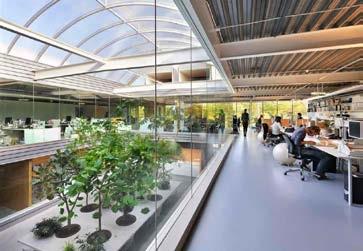
9 minute read
Building Surroundings
Destinations in office Buildings
stIMulAtethe MoBIle WorkPlAce
Advertisement
try to encourage a variety of physical postures. For example, give employees a laptop instead of a desktop workstation. this gives them more freedom to find suitable working environments and/or positions. ProvIDe sPAces For restIng
Provide areas for personal resting and relaxation which simultaneously act as destinations. Productivity can be boosted when staff can trade the busy workplace for a tranquil spot where peaceful acoustics, natural light, greenery and fresh air are plentiful.
1.08 1.11 1.15 1.20 2.01 2.02 2.04 2.08 2.14 3.01 3.02 3.06 3.07 3.08 4.07
1.09 1.11 1.15 1.18 2.01 2.03 2.05 2.10 2.12 3.04 3.06
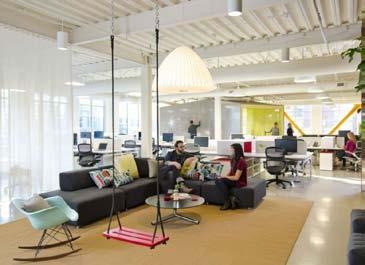
IntroDuce A vArIetyoF AtMosPheres try to create a variety of atmospheres in the workplace environment. human beings feel the need for various moods during the course of a day (brightly/dimly lit, busy/tranquil surroundings). offering such diversity can provide the opportunity for a brief stroll.
1.01 1.10 1.11 1.16 1.18 2.01 2.02 2.04 2.08 2.13 3.01 3.06 4.07
DIsPerse collectIve FunctIons
Position the communal functions of different companies or departments (e.g. consultation rooms, concentration areas, coffee corners) within comfortable walking distance of each other and the workplace.
1.06 1.19 1.20 1.21 2.02 2.04 2.08 2.13 3.04 3.07 3.08
coMBIne FunctIonsto creAte socIAlsPAces combining auxiliary functions such as toilets, kitchenettes and printers can provide a setting for social interaction and thereby form a destination.
1.10 1.17 1.16 2.01 2.02 2.07 2.13 consider centralizing functions. these might include a central, well-ventilated print and photocopy room instead of printers at every workplace. Another option might be a central recycling station instead of wastepaper baskets beneath every desk. this not only encourages physical activity but also facilitates the separation of waste and the promotion of awareness.
1.06 1.11 1.17 2.02 2.04 2.08 2.12 2.13 3.04
ADD unIQue collectIve ProgrAMMe Add unique (collective) programme functions such as a boardroom, a projection room or a garden room for informal meetings. In addition to creating added value for tenants, these functions act as destinations encouraging activity.
1.06 1.10 1.17 1.18 2.01 2.06 2.09 2.13 3.03
gym
Activity Programme in office Buildings
encourAgethe ActIve Posture
Furnish the office with ergonomic furniture encouraging activity. heightadjustable desks, high stools and high tables are examples of furniture that encourages active and a variety of postures throughout the day.
2.01 3.01 3.02 3.06 encourAge eMPloyeesto cycleto Work Provide secure, sheltered bicycle parking near the ground floor. tailor the number of e-bike connections to the building’s intended users.
3.06 3.07 3.08 4.03 4.04 4.05
coMBIne lABour AnD ActIvIty
experiment by integrating exercise facilities into the workplace (e.g. a bike pedal exerciser under the desk).
3.02 3.03 3.04 3.06 4-xx 4-xx 4-xx 4-xx 4-xx
MAke ActIvItysPAces AttrActIve AnD vIsIBle locate gyms or activity spaces in visible places such as the first floor or the ground floor, with views onto the surrounding area. consider making these spaces available outside office hours to people who live or work locally.
2.12 3.04 3.05 4.01 ensurethAteMPloyees cAntAke A shoWer Provide changing rooms and showers to encourage active commuting. these spaces also make lunch-hour exercise a comfortable option.
3.03 3.07
ProvIDevIsuAl InForMAtIon
Provide central or digital information on the availability of sports facilities and any activity programmes to encourage users to exercise.
1.06 1.07 2.06 2.09 3.03 3.06
Building surroundings and office Buildings
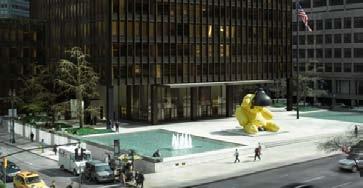
MAke entrAnces nuMerous AnD trAnsPArent create multiple street-level entrances that are clearly recognizable, safe and transparent so that the pedestrian area and the entrance lobby may be experienced. this not only encourages movement between the interior and the exterior but also promotes social control in the public space. AvoID eMPtylots AFter oFFIce hours After office hours, parking spaces for cars and bicycles are not in use. these empty lots can negatively affect the walkability of a neighbourhood. consider upgrading these areas using pedestrian routes, seating (mobile if possible), water features, public artworks and greenery.
1.19 4.02 4.03 4.04
IntroDuce AttrActIve urBAn FunctIons consider introducing public programme by adding a street-level cafeteria or lunchroom. this stimulates diversity at the urban level, it provides a destination for physical activity, and it adds social value to the surrounding area.
2.03 4.01 4.02 4.05 4.07
2.01 2.09 2.12 3.03 3.06 4.01

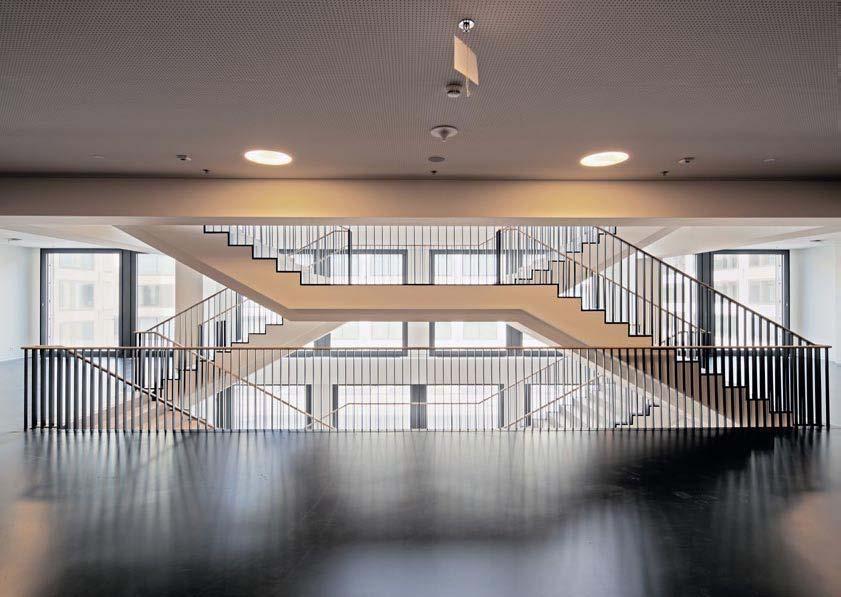
Appendices

Interviews
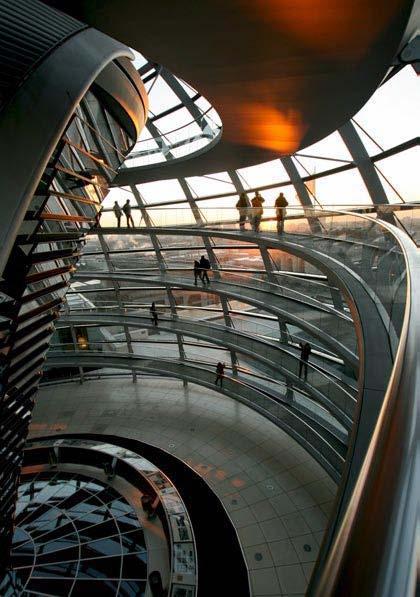
henri snel is an architect, researcher and head of the InterArchitecture department at the gerrit rietveld Academie in Amsterdam. henri was confronted with the realities of Alzheimer’s when his mother was diagnosed with this disease not long after the turn of the century. since then he has pioneered ongoing interdisciplinary research into the relationship between Alzheimer’s disease, cognitive systems and architecture. henri’s expertise in the fields of sensory perception and architecture is what drew him into the project. his substantive contribution to this study involved conducting a series of discussions with the authors, introducing relevant literature and his professional network.
B: Adnan Mirza
Adnan Mirza was born in Pakistan and has worked on creating a healthier world from six different continents. Adnan’s career encompasses a stint as a competitive glider pilot. he is currently the ceo of heartbeat ventures, an Amsterdam-based consultancy focused on prevention in the healthcare sector.
We lIve longer AnD unheAlthIer lIves
human life expectancy continues to rise, yet our healthy life expectancy is decreasing, even in absolute terms. this decrease is mainly due to the prevalence of unhealthy lifestyle choices and the chronic diseases they lead to.
the resIlIence oF the huMAn BoDy
Many people (un-) wittingly abuse their bodies with chronic illness as a result. unhealthy diets, insufficient exercise, lack of rest and excessive stress levels are all major causes of chronic diseases. the human body can function perfectly well for 20 to 30 years before it starts to show signs of dysfunction. After this period, wear and tear takes its toll and bodily functions start to fail. In other words, the human body is actually incredibly resilient. unheAlthy choIces
chronic diseases are the result of personal choices, but not necessarily a lack of personal responsibility. Issues of this kind are influenced by social relations, society, the urban environment and of course individual personality. Do you see health as something that happens to you? or is it a result of self-control and competence? how much awareness, responsibility and discipline can you muster with the aim of staying healthy?
Adnan explains that as a society we primarily invest in the treatment of chronic disease and the suppression of symptoms. In other words, we as a society only start to invest when the damage has already been done. Adnan likes to compare the situation with his stint as a glider pilot. Although pilots are trained to use their superior flying skills in crash situations, these skills are primarily used to prevent such situations from ever occurring. Adnan believes that healthcare system is currently focused exclusively on the crash situation and far too little on prevention.
InvestIng In PreventIon
We should not expect insurance companies to initiate a shift towards investment in prevention. After all, it is difficult to produce hard data demonstrating the impact of a prevention-based approach. A modest disruption is required if change is to be effected. the driving forces behind such a revolution are companies such as nike, which are utterly committed to exercise and health. ‘Believers’ are what is needed.
InFluencIng BehAvIour
not everyone wants to be healthy, so there will always be winners and losers in healthcare. It is therefore important to be realistic about the situation and to focus our energies on people who are willing to adopt a healthier lifestyle. the focus should be on companies such as nike, not on people with the lowest levels of physical activity. the motto should be: ‘Make the easy choice the healthy choice’.
c: toine schoutens
toine schoutens is a light-therapist for performance enhancement in top-level sports, aviation (jet lag), welfare and working conditions. he is affiliated with the coronel Institute for occupational health at AMc in Amsterdam and the light and health research Foundation (solg) in eindhoven. he also advises the Dutch olympic committee and various sports teams. toine schoutens was interviewed to gain a better understanding of how light affects us on a daily basis. this knowledge is useful in designing spaces where the use of light appeals to our subconscious decision-making.
huMAns AnD DAylIght
human evolution has shaped us for a life lived outdoors, in daylight. We are built for prolonged exposure to daylight, but since the Industrial revolution people have spent long periods indoors, thanks in part to the invention of artificial light. however, humans have not yet adapted to this change in rhythm and can experience it as biologically disruptive. In theory, increasing light intensity results in better concentration and productivity in humans. however, at certain times of day we experience a need for lower light levels in order to rest. In countries in southern europe, taking a siesta is commonplace and this suggests that humans cannot consistently function in a very bright environment. one reason people take a siesta is the need for contrast.
FunctIonAllIght
Biologically, human beings need various light intensities during the course of a day. But instead we spend long periods staring at screens that require a static functional light level. Discrepancies between our biological needs and visual functionality are commonplace during the working day. Almost inevitably, visual functionality is given priority but the resulting static lighting conditions are often not good for our concentration or our wellbeing. tyPes oF lIght
the intensity and colour of light have a major impact on how people feel in a situation. red and blue light can be used to influence human performance, for example, by causing a shift in the rhythm of night and day. older people often suffer from yellowing of the eye and homes for the elderly therefore often employ variations of blue light to create situations that are better suited to the biological clock of their residents.
lettIng DAylIght In
our 24-hour economy has completely disrupted our original daylight condition. the best way to re-attune to our biology is to use as much natural daylight as possible in our buildings.
however, this is not always possible and sometimes we have to resort to artificial light. human centric lighting can replicate the outdoor situation, including changes in light intensity and colour. In this regard, o-leD is the ‘biological’ version of leD lighting, enabling the use of ambient light instead of a point light source. this provides greater light intensity with lower brightness and is better attuned to human biology.






